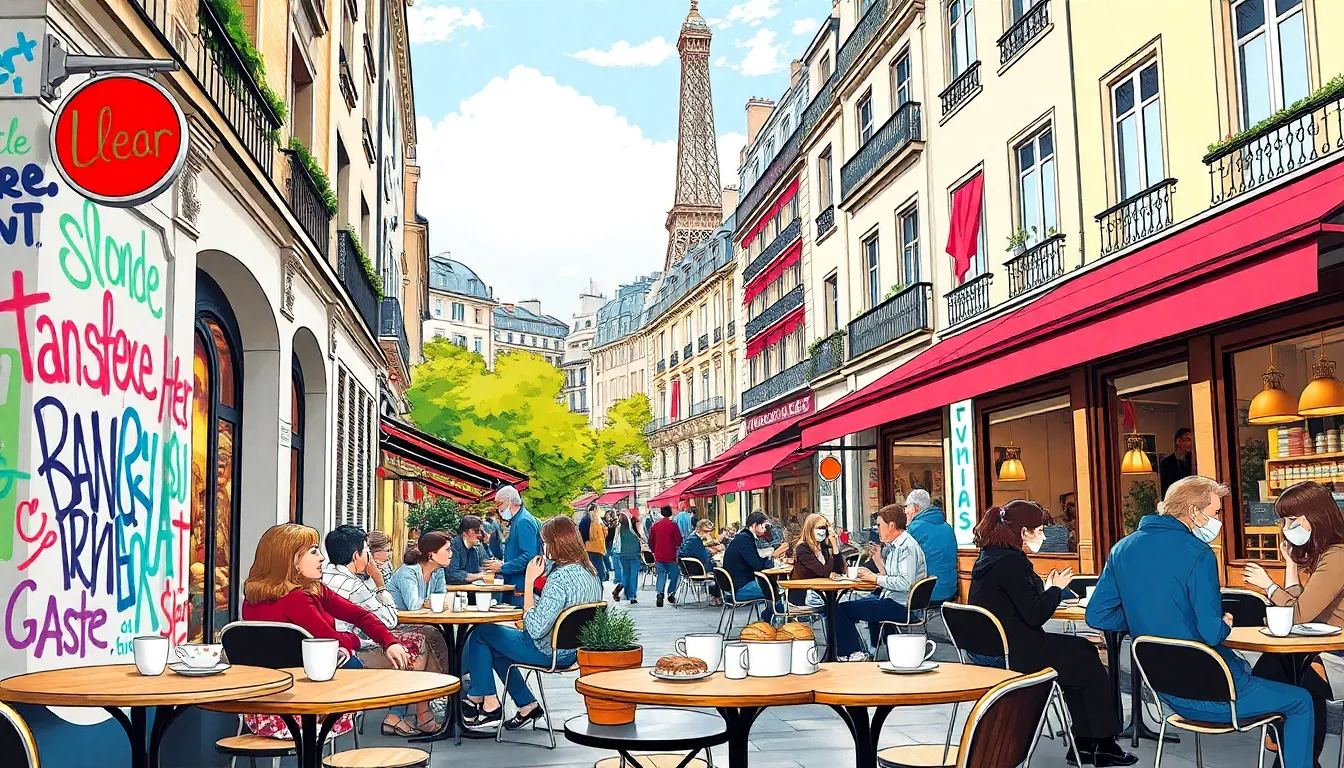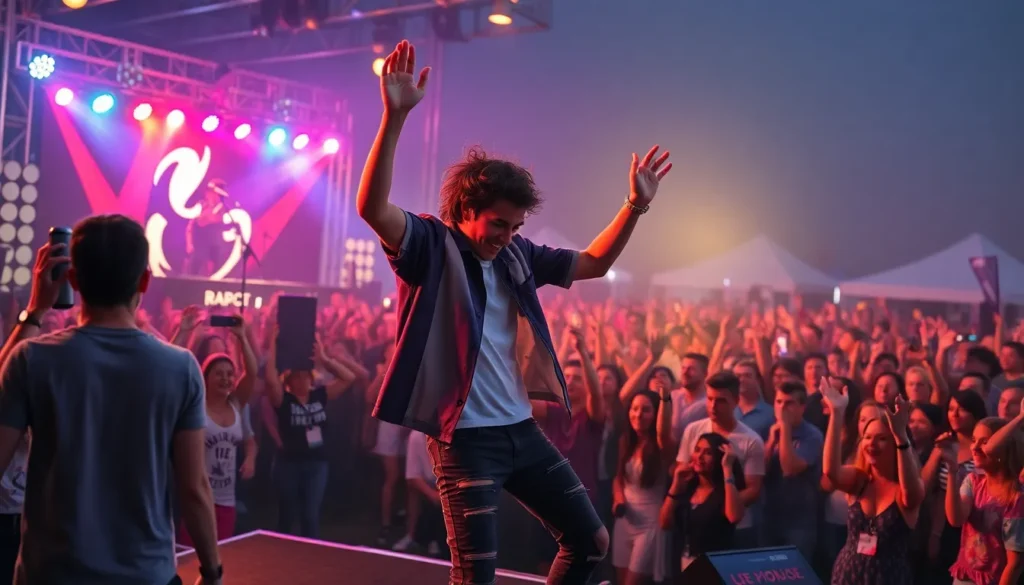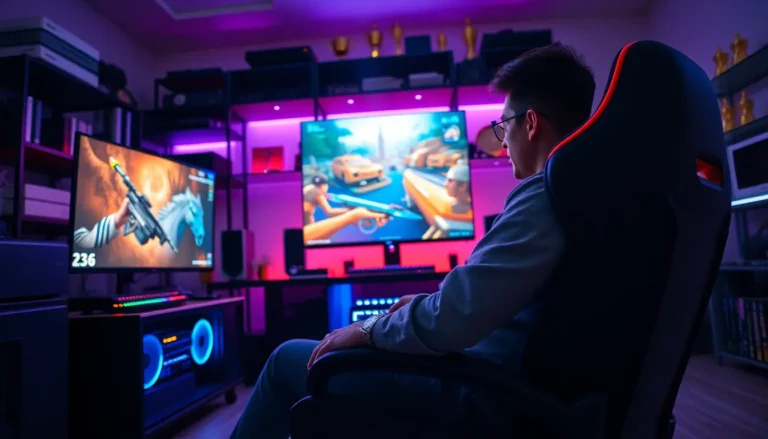French pop culture isn’t just about croissants and berets; it’s a vibrant tapestry woven with music, film, fashion, and art that has captivated the world. From the infectious beats of contemporary French pop to the cinematic brilliance that’s made waves at international festivals, it’s a treasure trove waiting to be explored.
Table of Contents
ToggleOverview of French Pop Culture
French pop culture embodies a vibrant blend of music, film, fashion, and art. Music reflects this richness through genres like Chanson, pop, and hip-hop. Artists such as Stromae and Christine and the Queens have captivated global audiences with their innovative sounds.
Film plays a significant role in defining French pop culture. The cinematic landscape features filmmakers like Jean-Luc Godard and Agnès Varda, who have left a lasting impact. Contemporary films, such as “Blue Is the Warmest Color” and “The Intouchables,” showcase unique storytelling and have garnered international acclaim.
Fashion remains a cornerstone of French identity. Paris, often referred to as the fashion capital, hosts major events like Paris Fashion Week. Renowned designers such as Coco Chanel and Yves Saint Laurent set trends that influence global styles, shaping the way people dress worldwide.
Art also thrives in this cultural landscape. The works of artists like Banksy and Pierre Soulages illustrate a diverse artistic expression. Museums and galleries in France, including the Louvre and Musée d’Orsay, attract millions of visitors eager to explore French artistry.
Pop culture in France reflects societal changes and trends, consistently evolving while rooted in its historical context. The fusion of traditional elements with modern influences creates a dynamic cultural narrative that resonates with audiences both locally and internationally.
Key Influences on French Pop Culture

French pop culture draws from various influences that shape its identity and evolution. Historical events have played a vital role in the development of cultural expressions in France.
Historical Context
France’s rich history of revolutions and artistic movements laid the groundwork for its pop culture. The French Revolution in 1789 sparked a shift towards new artistic freedoms, influencing music, literature, and visual arts. In the 20th century, the emergence of movements like Surrealism and Nouveau Roman challenged traditional narratives, promoting innovative storytelling. Also, the May 1968 uprisings significantly impacted the music scene, leading to the emergence of protest songs and countercultural movements. Pop culture reflects these historical transitions, intertwining past events with modern expressions.
Global Impact
French pop culture significantly influences global trends across various industries. The world recognizes French cinema for its unique storytelling and artistry, paving the way for filmmakers like François Truffaut and Claire Denis to shape global cinema. In music, artists like Daft Punk and Le Tigre have achieved international acclaim, blending French sensibilities with global genres. Furthermore, France’s fashion scene impacts global trends through iconic design houses and celebrated fashion weeks. French art resonates worldwide, seen through exhibitions that captivate global audiences and inspire new artistic movements. Pop culture in France continually shapes and responds to international dialogues, reflecting the interconnectedness of global creative expressions.
Major Elements of French Pop Culture
French pop culture showcases a vibrant tapestry of influences that shape its current identity. Key aspects include music trends, film and television achievements, as well as fashion and art movements.
Music Trends and Icons
Chanson remains a staple of French music, characterized by its poetic lyrics and emotional depth. Pop and hip-hop genres have surged, marked by artists such as Christine and the Queens and Stromae, who blend styles and themes appealing to global audiences. Electronic music also thrives, with icons like Daft Punk leading the genre’s evolution. Monthly playlists often feature emerging talents, reflecting the continuous innovation within the scene. Festivals like Les Vieilles Charrues and Printemps de Bourges play key roles in showcasing diverse sounds and fostering new artists.
Film and Television
Film is a vital component of French cultural identity, with notable filmmakers like Jean-Luc Godard and Agnès Varda revolutionizing cinema. Iconic films such as “La Haine” and “Amélie” illustrate unique storytelling and artistic vision. Contemporary cinema continues to attract attention, as evidenced by works like “Portrait of a Lady on Fire” and “The Intouchables.” Streaming platforms also influence viewer habits, leading to a rise in French series gaining international popularity. Productions like “Lupin” highlight the dynamic nature of the industry and its capacity to reach wider audiences.
Fashion and Art
Fashion epitomizes French elegance and innovation, with Paris recognized as the global fashion capital. Major events like Paris Fashion Week attract attention from enthusiasts and critics alike. Designers such as Balenciaga and Balmain represent the cutting edge of contemporary style. The art scene is equally rich, showcasing contributions from renowned artists like Banksy and Pierre Soulages. Museums such as the Louvre and Musée d’Orsay draw millions of visitors, highlighting the significance of art within France’s cultural landscape. Diverse exhibitions reflect ongoing dialogues in society through creative expressions.
Contemporary Trends in French Pop Culture
Contemporary French pop culture showcases its dynamic nature through the influence of various platforms and the vibrant energy of youth.
Social Media Influence
Social media significantly shapes modern French pop culture. Platforms like Instagram and TikTok provide musicians and artists exposure, allowing them to reach global audiences quickly. Viral trends emerge, fostering new talent and spreading unique styles. Influencers drive fashion trends, showcasing both established designers and emerging creators. Additionally, social media facilitates communication among artists and fans, creating a shared experience that enhances the cultural landscape. Content creators often collaborate with musicians, blending music and visual arts, further enriching French pop culture. The immediacy of these platforms increases the visibility of movements within the scene, establishing a real-time dialogue about evolving trends.
Youth Culture
Youth culture defines contemporary French pop expression. Young audiences influence music genres, shaping how genres like pop and hip-hop evolve. Artists like Angèle and Orelsan connect with listeners through relatable themes and innovative sounds. The rise of streetwear captures the attention of younger demographics, blending casual style with high fashion. Urban culture thrives in cities like Paris and Marseille, where diversity inspires creative collaborations. Festivals and music events foster community, allowing youth to engage with artists and each other. Humor and satire permeate contemporary content, reflecting the desires and challenges of young people in France today, thus forging a distinct cultural identity.
French pop culture stands as a testament to the country’s rich artistic heritage and its ongoing evolution. From music that resonates with global audiences to films that challenge narratives, it captures the essence of contemporary society.
The vibrant interplay of fashion, art, and youth culture reflects the dynamic nature of France’s cultural landscape. As it continues to influence and inspire around the world, French pop culture remains a vital force in shaping creative expressions. Its ability to adapt and innovate ensures that it will remain relevant for generations to come.




